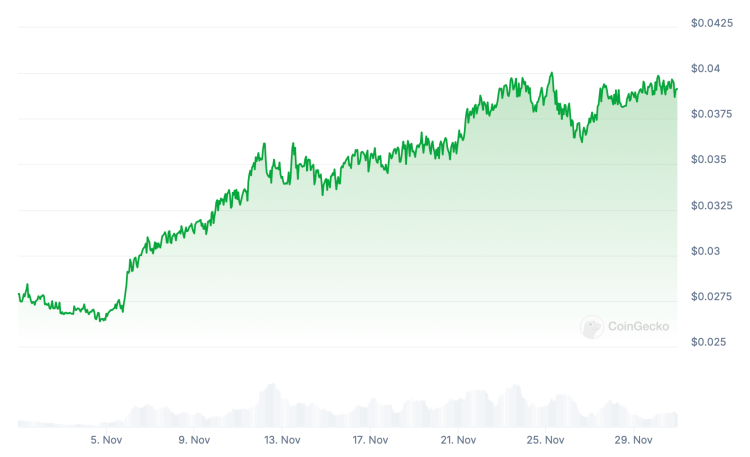Nov 2024 Summary

In Nov 2024, The 2024 U.S. presidential election has featured cryptocurrency as a prominent issue, especially among Republican candidates. Donald Trump has emerged as a strong advocate for crypto, making multiple promises aimed at reshaping the industry's regulatory and operational landscape:
1. Creating a Crypto Advisory Council: Trump has pledged to form a presidential council that includes pro-crypto regulators to draft new rules within his first 100 days in office.
2. Ending “Operation Choke Point 2.0â€: He criticized federal policies that hinder banks from working with crypto companies and promised a more favorable regulatory environment.
3. Establishing a Strategic Bitcoin Reserve: Trump proposed using Bitcoin as part of a national reserve, framing it as a strategy to bolster the U.S.'s position in global crypto leadership.
4. Opposition to a Central Bank Digital Currency (CBDC): He has strongly opposed the development of a U.S. CBDC, citing concerns about privacy and government overreach.
5. Supporting Domestic Bitcoin Mining: Trump expressed interest in making the U.S. a hub for Bitcoin mining, aligning with his broader “America First†policies.
6. Firing SEC Chair Gary Gensler: He vowed to replace the SEC leadership with individuals more sympathetic to the crypto industry.
7. Advocating for Self-Custody Rights: Trump promised to protect the right of crypto users to hold their assets independently, reinforcing the principle of “not your keys, not your coinsâ€.
Trump's campaign has energized parts of the crypto community, especially amid frustration over perceived regulatory hostility under the Biden administration. However, his proposals, such as firing the SEC chair or establishing a Bitcoin reserve, may face significant legal and logistical challenges if implemented.
Not Just Trump
The 2024 U.S. elections resulted in a historic shift toward cryptocurrency-friendly representation in Congress, with over 270 pro-crypto candidates elected.
This includes 257 representatives in the House and 18 senators, creating what has been described as the “most pro-crypto Congress ever.†Support for digital assets played a significant role in the campaigns, with crypto advocacy groups like Stand With Crypto and the Fairshake SuperPAC contributing significant funds to candidates who favor blockchain innovation and reduced regulatory hurdles for cryptocurrencies.
Voter enthusiasm for crypto-related policies was driven partly by dissatisfaction with the perceived anti-crypto stances of officials like Senator Elizabeth Warren and SEC Chair Gary Gensler. Many pro-crypto candidates pledged to create clearer, more favorable regulations to encourage innovation and investment in digital assets.
The newly elected Congress is expected to influence U.S. cryptocurrency policy significantly, potentially paving the way for advancements in blockchain technology and decentralized finance while addressing issues like consumer protection and fraud prevention.
Market Trends
The 2024 U.S. elections had a significant positive impact on the cryptocurrency market, with major tokens experiencing strong rallies as pro-crypto candidates gained a majority in Congress and Donald Trump, a vocal crypto advocate, was elected president. Here's a summary of performance gains across key cryptocurrencies:
1. Polygon (POL): The standout performer, Polygon surged by 84.2%, reflecting optimism over its ecosystem's scalability and anticipated regulatory support.
2. Uniswap (UNI): UNI saw a 67.9% rise, likely due to expectations for decentralized finance (DeFi) frameworks gaining clarity and institutional adoption.
3. Ethereum (ETH): ETH grew by 48.1%, bolstered by hopes for further integration of smart contracts and decentralized applications in a favorable regulatory climate.
4. Solana (SOL): SOL increased by 41.2%, buoyed by its fast transaction speeds and growing developer adoption.
5. NeuyAI (NEUY): NEUY advanced by 40.3%, reflecting confidence in AI-powered blockchain solutions and the broader AI-crypto narrative.
6. Bitcoin (BTC): BTC rose by 38.9%, as the market responded positively to policy proposals, such as creating a U.S. Bitcoin reserve and fostering a robust Bitcoin mining ecosystem.
The elections catalyzed a “crypto spring,†with widespread investor enthusiasm and a renewed belief in the sector's long-term viability.
Neuy Trends
NeuyAI (NEUY) reached its all-time high, a milestone that stood out as it occurred while many other cryptocurrencies were still recovering from the prolonged “crypto winter.†This surge in NeuyAI's value reflected its resilience and unique positioning within the AI and blockchain sectors, which attracted investor confidence and speculative activity ahead of broader market recoveries.
Unlike Ethereum, Polygon, and Uniswap—still climbing back toward their historical peaks—NeuyAI's early recovery demonstrated strong community support and strategic advancements in its ecosystem. This positioned it as a leader in the market's rebound phase.
POL +84.2%
UNI +67.9%
ETH +48.1%
SOL +41.2%
NEUY +40.3%
BTC +38.9%
*percentage based on prices from Nov 1 - 30 inclusive.
NEUY Automated Buybacks: + $10,600 / (264,000 NEUY's)

